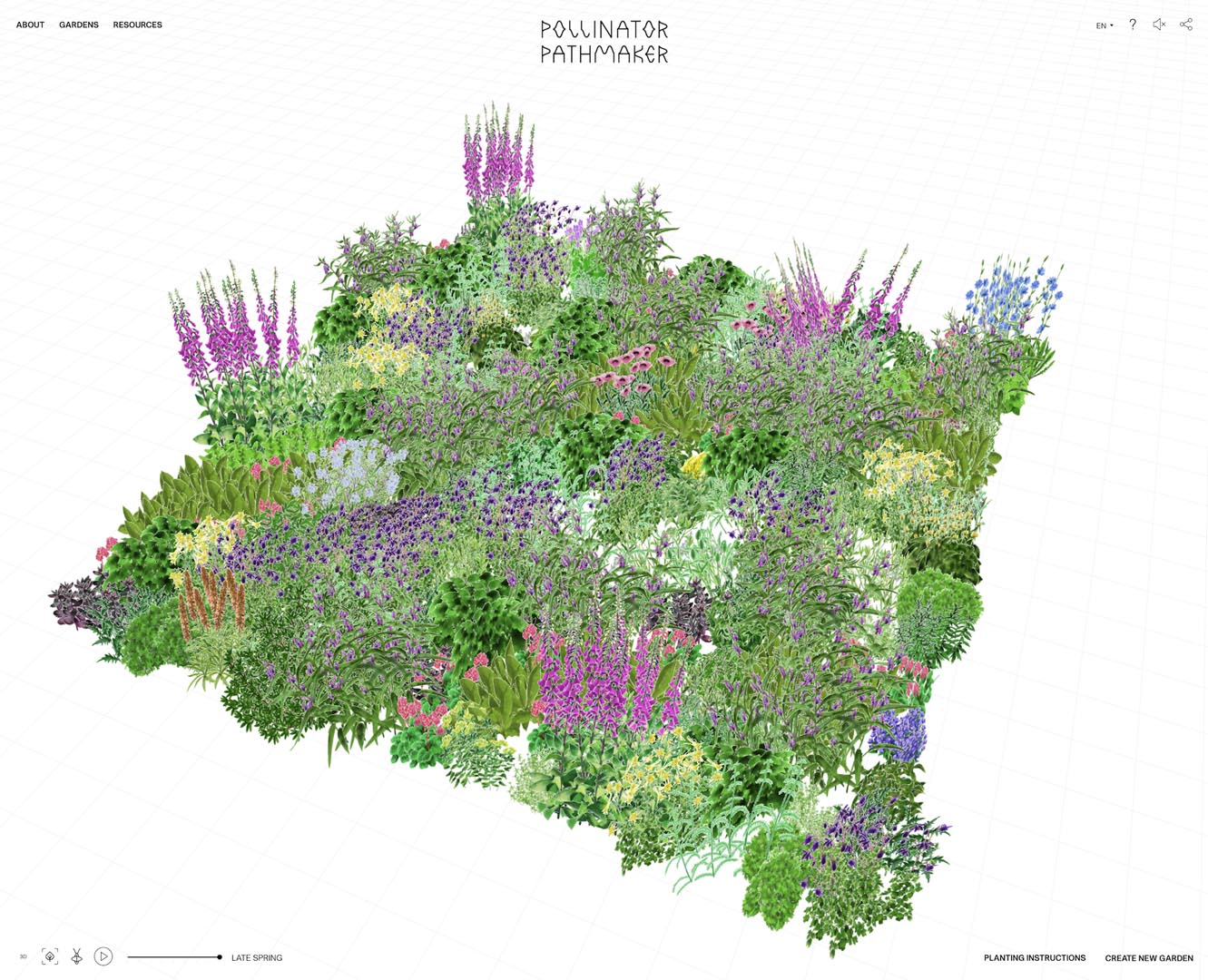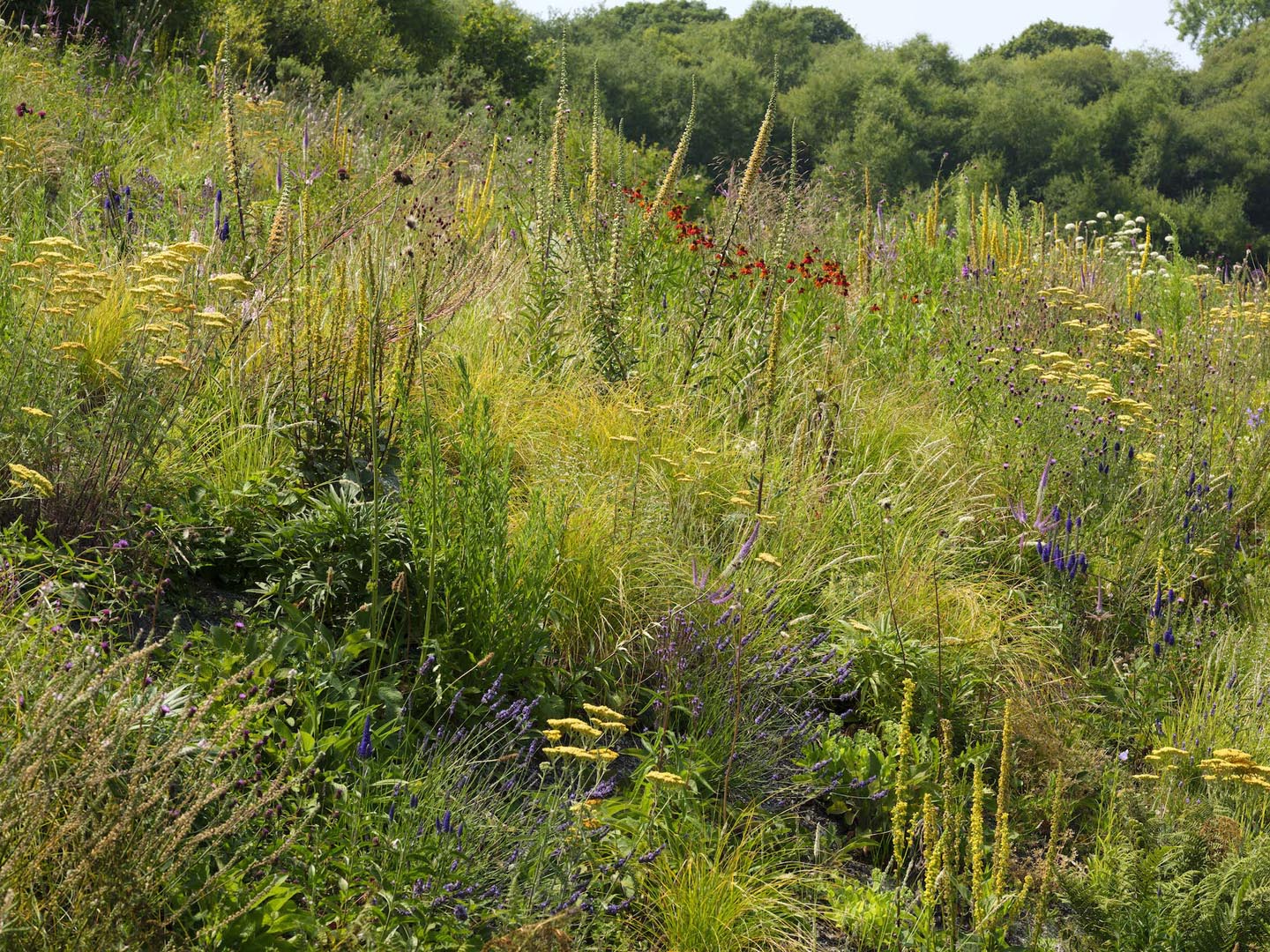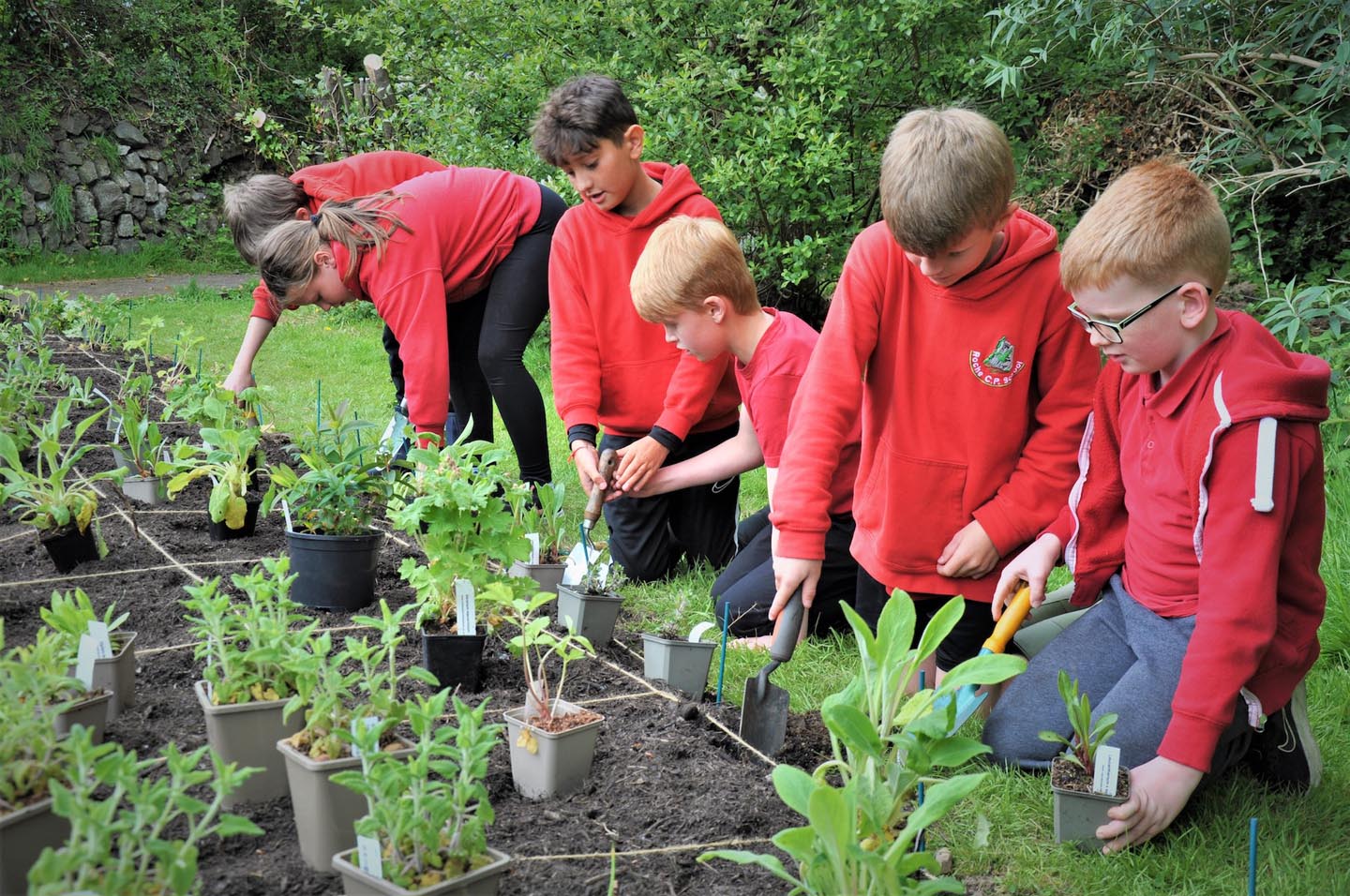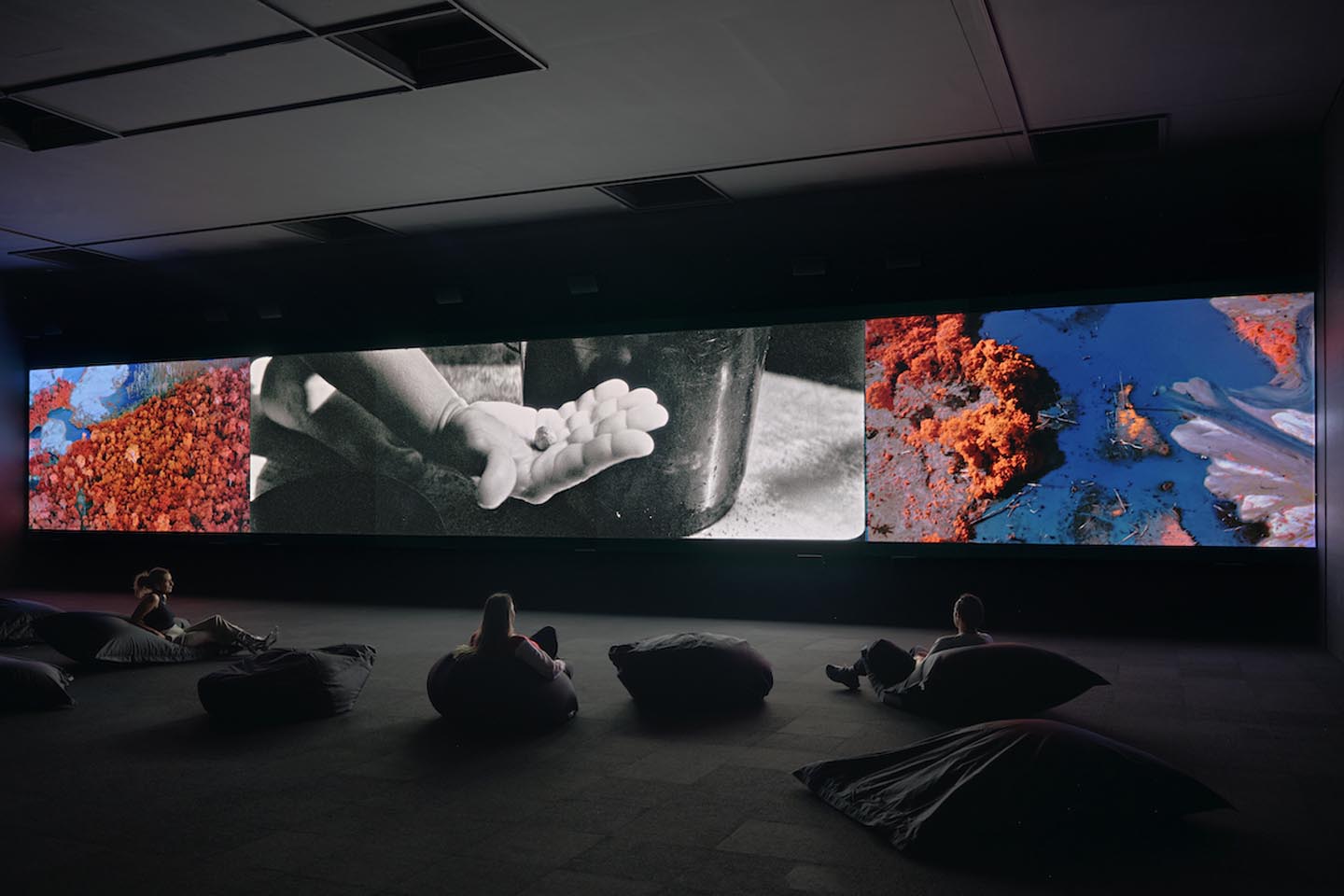Alexandra Daisy Ginsberg is awarded with the Grand Prize – Artistic Exploration for the work Pollinator Pathmaker, 2021. While Richard Mosse is awarded with the Grand Prize Innovative Collaboration for Broken Spectre, 2022. Their projects were selected amongst 169 applications from 78 countries that responded to the open call that was launched in January 2023.

Pollinator Pathmaker is an artwork for pollinators, planted and cared for by humans. Created by the artist Alexandra Daisy Ginsberg, whose ambition is to create the world’s largest climate positive artwork, the work is a one-of-a-kind experiment in interspecies design. As numbers of pollinating insects around the world crash, Ginsberg worked with horticulturalists, pollinator experts, and a computer scientist to devise an algorithmic tool that designs planting for pollinators’ tastes, not human taste. Creating this tool to design with empathy for other species is at the heart of the artwork. To encode a human emotion like empathy into an algorithm, she defined empathy in this case as designing planting that supports as many pollinator species as possible.

The Pollinator Pathmaker algorithm follows a set of rules using the inputs – pollinator species and the plants they forage from – to calculate the planting design. It then selects and arranges plants to suit the different preferences of their visitors. Since the algorithm is made by humans, it can’t completely remove human biases such as taste. But an algorithm can help to dull the effect of these choices and design for other species, rather than us. Pollinator Pathmaker is an artwork informed by science; it’s not a scientific experiment. The result is a growing series of algorithmically-generated living artworks, designed to maximise empathy towards pollinating insects. Every artwork generated is different, but each is computed to support the greatest diversity of pollinator species. By creating for other species, art becomes a platform for empathy and agency to care for them.

The first two Pollinator Pathmaker Edition Gardens opened in 2022; a 55m permanent installation at the Eden Project, Cornwall, and eleven meandering beds over 250m in Kensington Gardens, London, commissioned by the Serpentine. The next will be planted with Light Art Space, Berlin, Germany, in Summer 2023.
Broken Spectre by Mosse is a dreamlike immersive video artwork that forms an exhaustive documentation of widespread yet unseen fronts of deforestation and industrialized ecocide in the Amazon, unveiled using a range of powerful scientific imaging technologies, at the tipping point of this crucial ecosystem’s erasure.

Through abrupt leaps in scale and medium, the film reveals unsustainable processes of extractive violence: illegal logging, mass burning, wildcat goldmining, the theft of Indigenous lands, species extinction, flooding and damming of rivers, and the forest’s colonization for encroaching monoculture plantations and vast intensive cattle farms.
For decades, scientists have harnessed advanced forms of remote sensing photography to understand the forest’s degradation, model tipping points, and reveal impending environmental catastrophe underway in the Amazon. Broken Spectre is an attempt to dial in on these opaque subjects using similar scientific imaging technologies, aggravated media that carry some agency in the biome’s destruction, as they are also used as tools of resource extraction by mining and agribusiness interests. As in past projects, the media that Mosse has chosen to tell these stories is embedded with complex, invisible layers of the systems involved, on international, governmental, and local levels. He uses them to make a Western, because the fraught iconography of the Western film carries uncanny echoes of the reality encountered in the field — a natural paradise and its Indigenous populations being colonized by pioneer settlers with the righteous zeal of Manifest Destiny and a distinct form of cowboy culture. Broken Spectre is a disquieting portrait of willful environmental catastrophe along the Trans-Amazonian Highway told through a kaleidoscope of scientific, cultural, historic, socio-political, activist, and anthropological filters.

The Prize competition is part of S+T+ARTS (Science, Technology and the Arts), an initiative funded by the European Commission since 2016. STARTS focuses on projects that strive to master the social, ecological and economic challenges that Europe is facing or will be facing in the near future. STARTS is driven by the conviction that, combined with an artistic viewpoint, science and technology open valuable perspectives for research and business in the field of ICT innovation, through a holistic and human-centred approach. From 2016 to 2022, this remarkable initiative funded 151 residencies with 4.5 Mio € and honoured 208 STARTS Prize projects. The competition received 14,291 submissions from 96 different nations between 2016 and 2022. Two prizes are awarded, each endowed with 20,000 euros. The Grand Prize – Artistic Exploration honours artistic research and works that have the potential to influence or change the way technology is used, applied or perceived. The Grand Prize – Innovative Collaboration is awarded to projects that combine industry or technology and the arts, with the goal of opening new paths for innovation. In addition, 10 more projects receive a Nomination or an Honorary Mention. The winning projects will then be featured at Ars Electronica Festival in September 2023 and other events of the consortium partners BOZAR, Waag Futurelab, INOVA+, T6 Ecosystems, French Tech Grande Provence and Frankfurt Bookfair.
HONORARY MENTIONS: Between the lines, 2023, by Sarah Selby (GB); Child of Now, 2022, by Robert Walton (AU), Julianne Pierce (AU), Claire Coleman (AU); CLIMAVORE, 2022, by Cooking Section (INT); Hashd0x | Proof of War, 2022, by Egor Kraft (RU); Labyrinth Psychotica – The Anoiksis Experiment by Roomforthoughts, 2023, by Jennifer Kanary (NL); MetaPhase, 2022, by Giusy Caruso (IT), LWT3 (IT); Sensing for Justice, 2021, by Anna Berti Suman (IT); SERVER FARM, 2021, by James Bridle (GB); Turba Tol Hol-Hol Tol, 2022, by Juan Pablo Vergara (CL); Camila Marambio (CL); VFRAME: Computer Vision for OSINT/OSI Research, 2022, by Adam Harvey (US); Josh Evans (US); Jules LaPlace (US).
The jury for the prize comprised Mónica Bello (ES/CH); Francesca Bria (IT); Bernd Fesel (DE); Jun Inada (JP) Univ. Prof.; Dr. Meinhard Lukas (AT).
images: (cover 1) Richard Mosse, «Broken Spectre», still Roraima, Multispectral GIS aerial, 2022. Courtesy of the artist, Jack Shainman and Carlier Gebauer (2) Alexandra Daisy Ginsberg, «The Pollinator Pathmaker», online tool. © Alexandra Daisy Ginsberg (3) Alexandra Daisy Ginsberg, «Pollinator Pathmaker», DIY Edition Roche School. © Roche (4) Alexandra Daisy Ginsberg, «Pollinator Pathmaker», Eden Project Edition photographed in July 2022. © Royston Hunt (5) Richard Mosse, «Broken Spectre», 2022, installation view at NGV International, St Kilda Road, Melbourne. Courtesy of the artist, Jack Shainman and Carlier Gebauer (6) Richard Mosse, «Broken Spectre», still, Adneia Yanomami I, Roraima, 2022. Courtesy of the artist, Jack Shainman and Carlier Gebauer









































